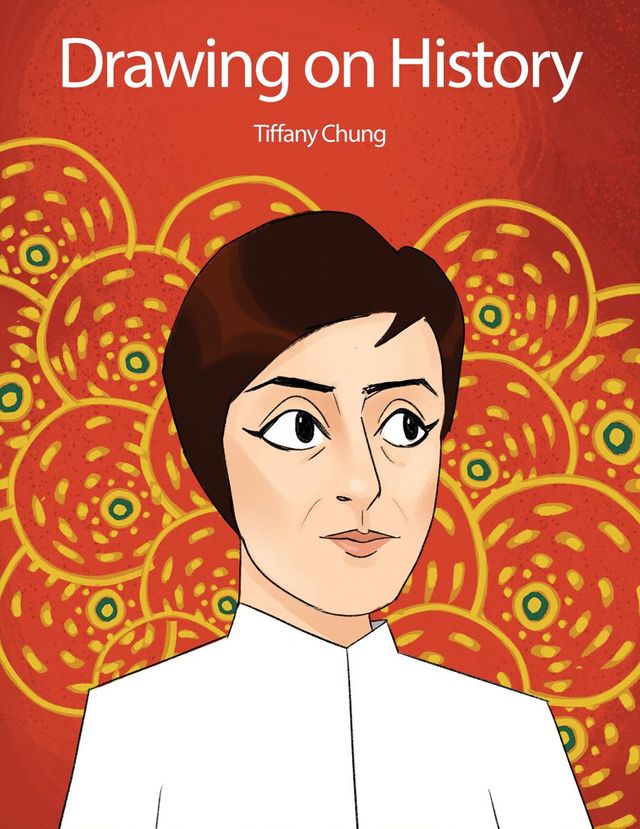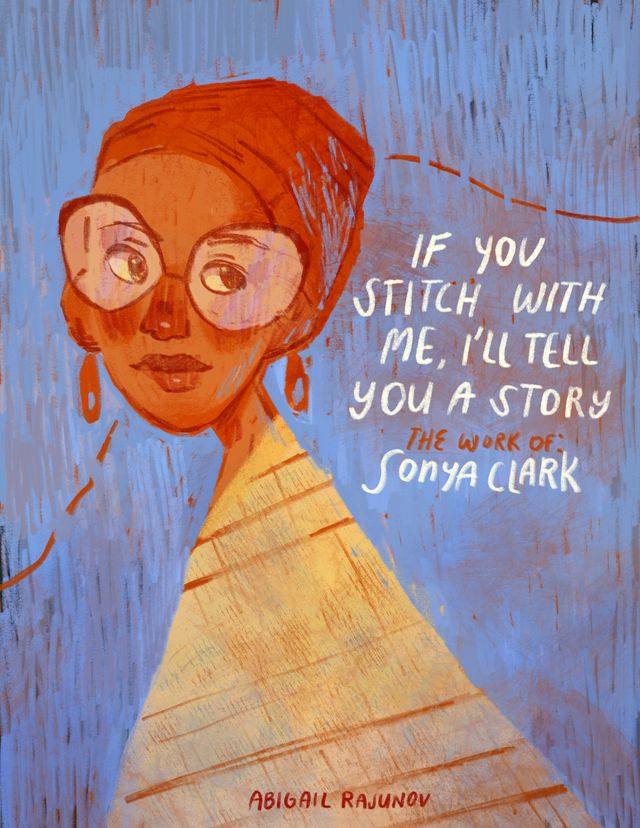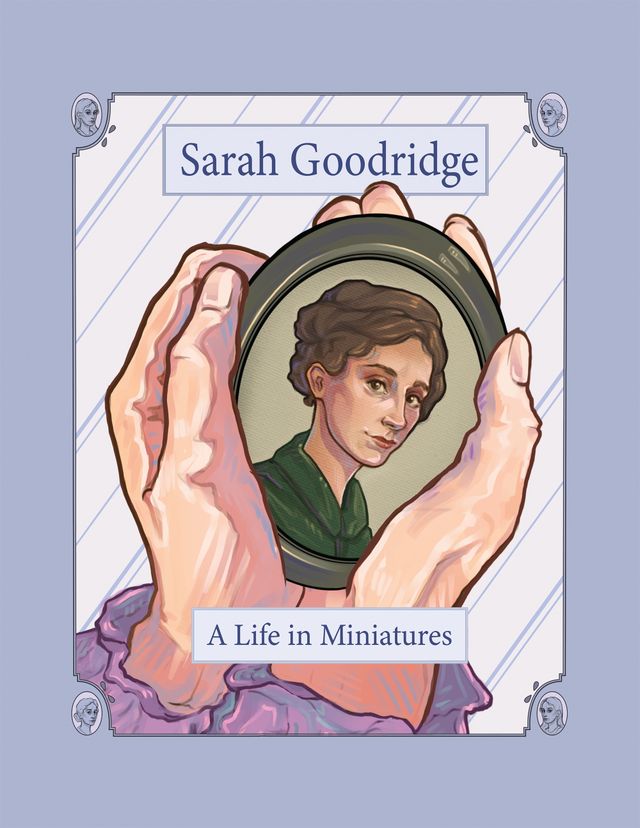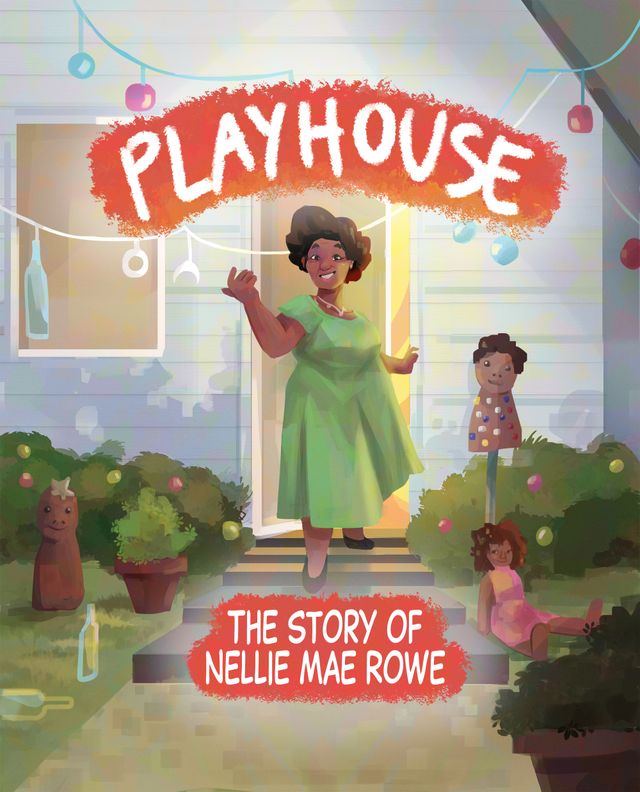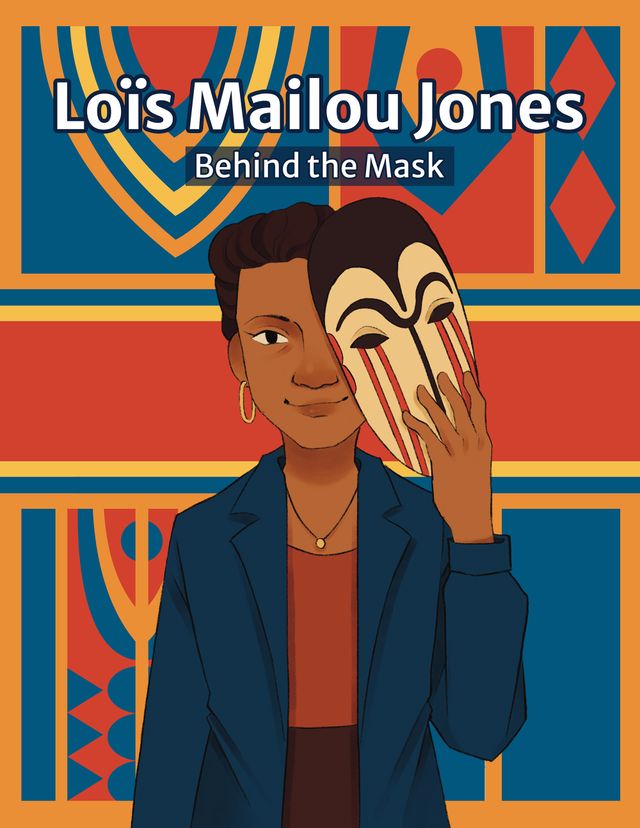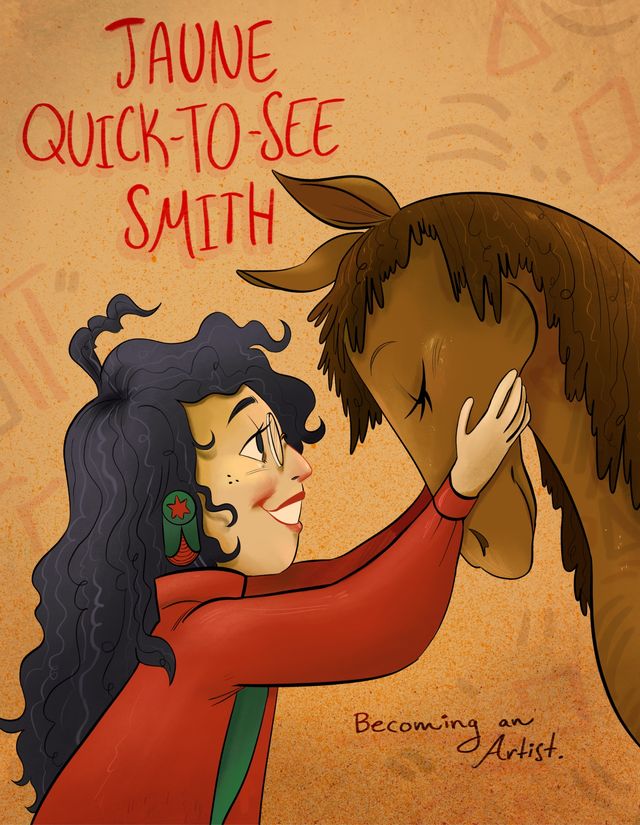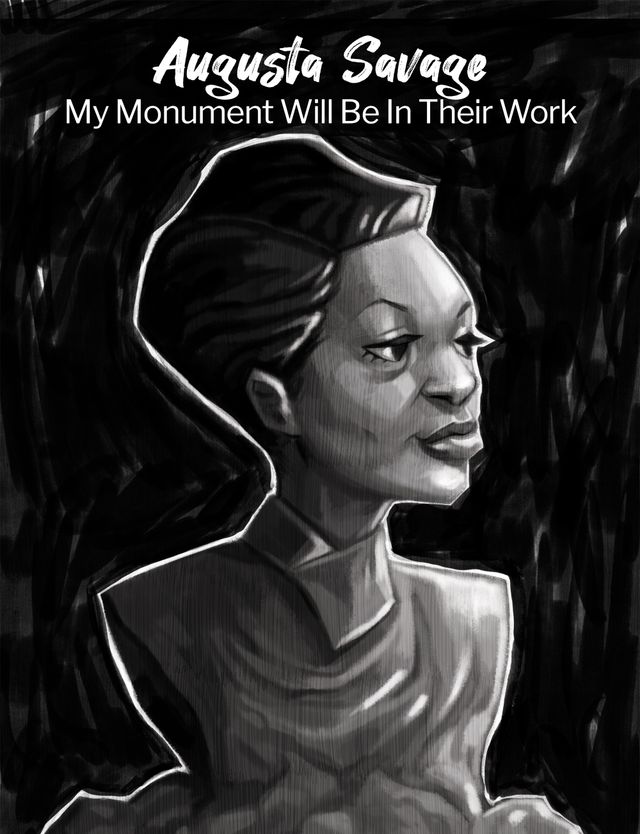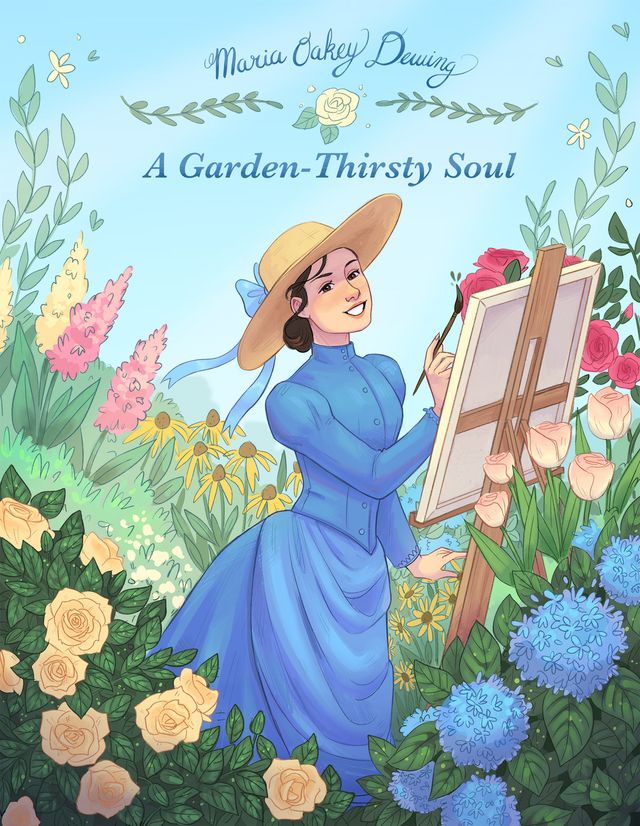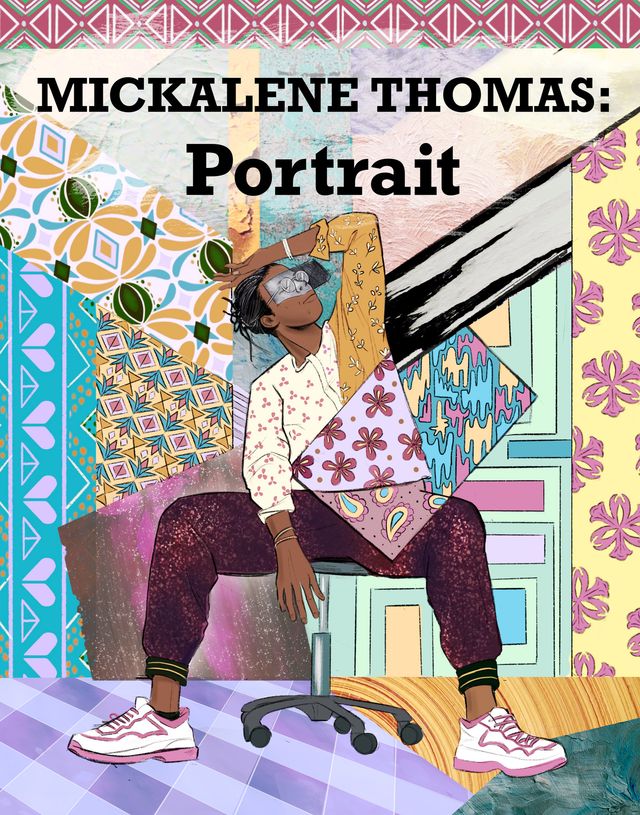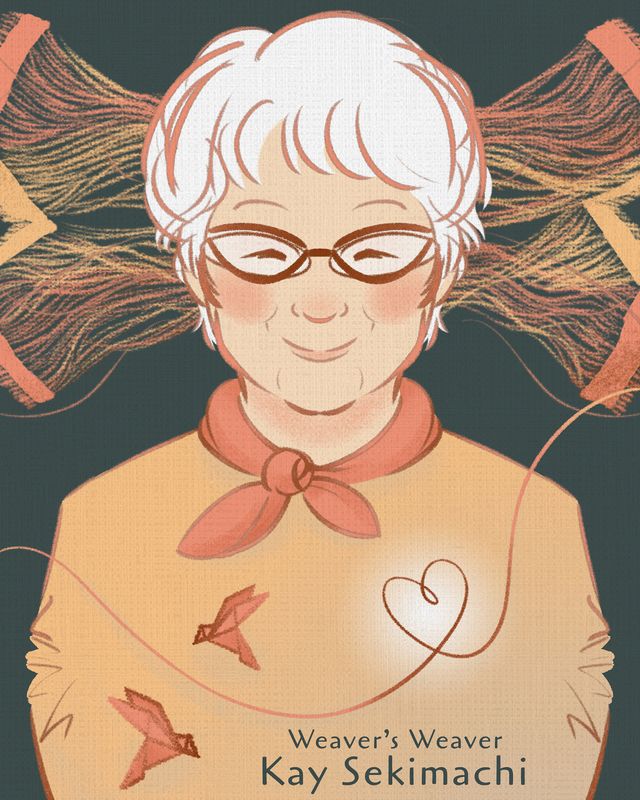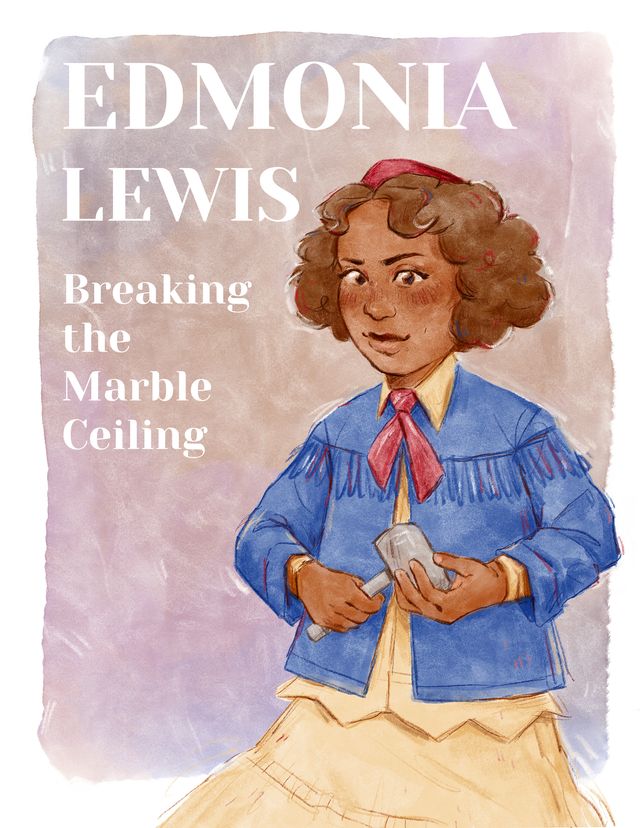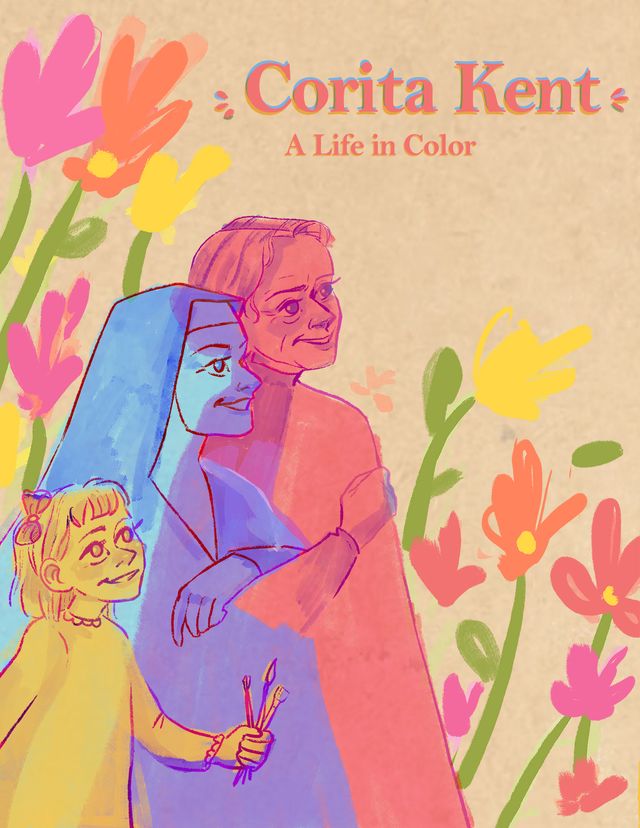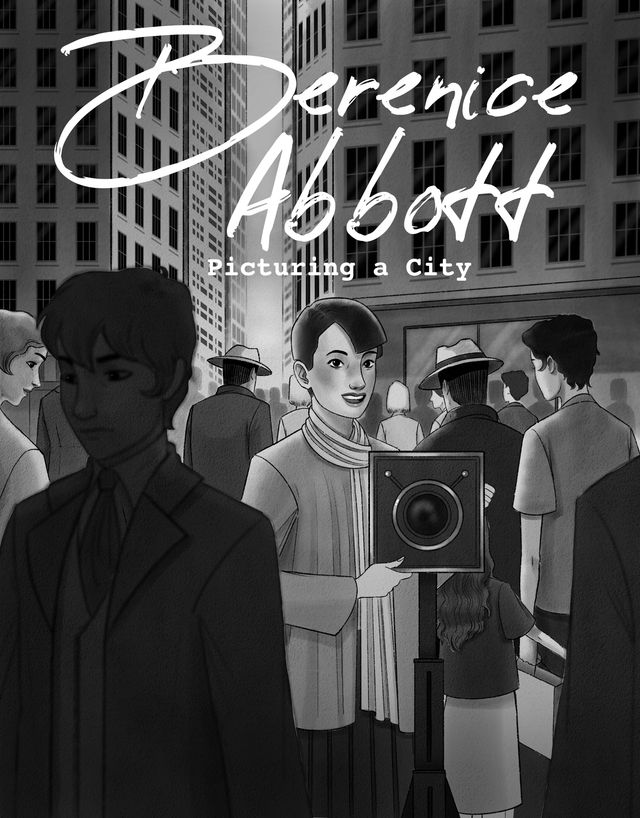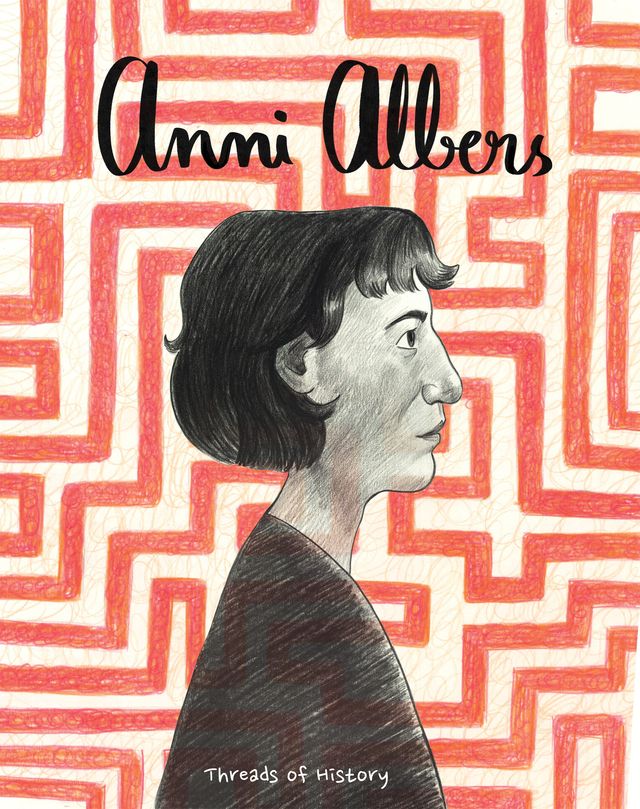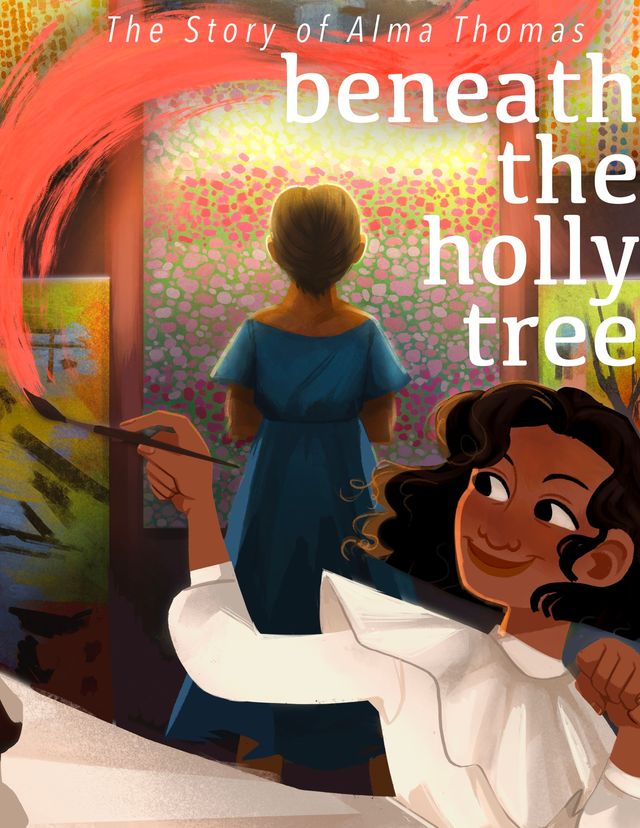This comic is part of a series Drawn to Art: Ten Tales of Inspiring Women Artists that illuminates the stories of ten women artists in the collection of the Smithsonian American Art Museum. Inspired by graphic novels, these short takes on artists’ lives were each drawn by a woman student-illustrator from the Ringling College of Art and Design.
Romaine Brooks suffered an abusive childhood but triumphed as an adult, embracing gender fluidity and her queer identity. Her fierce independence is inspiring to people today.
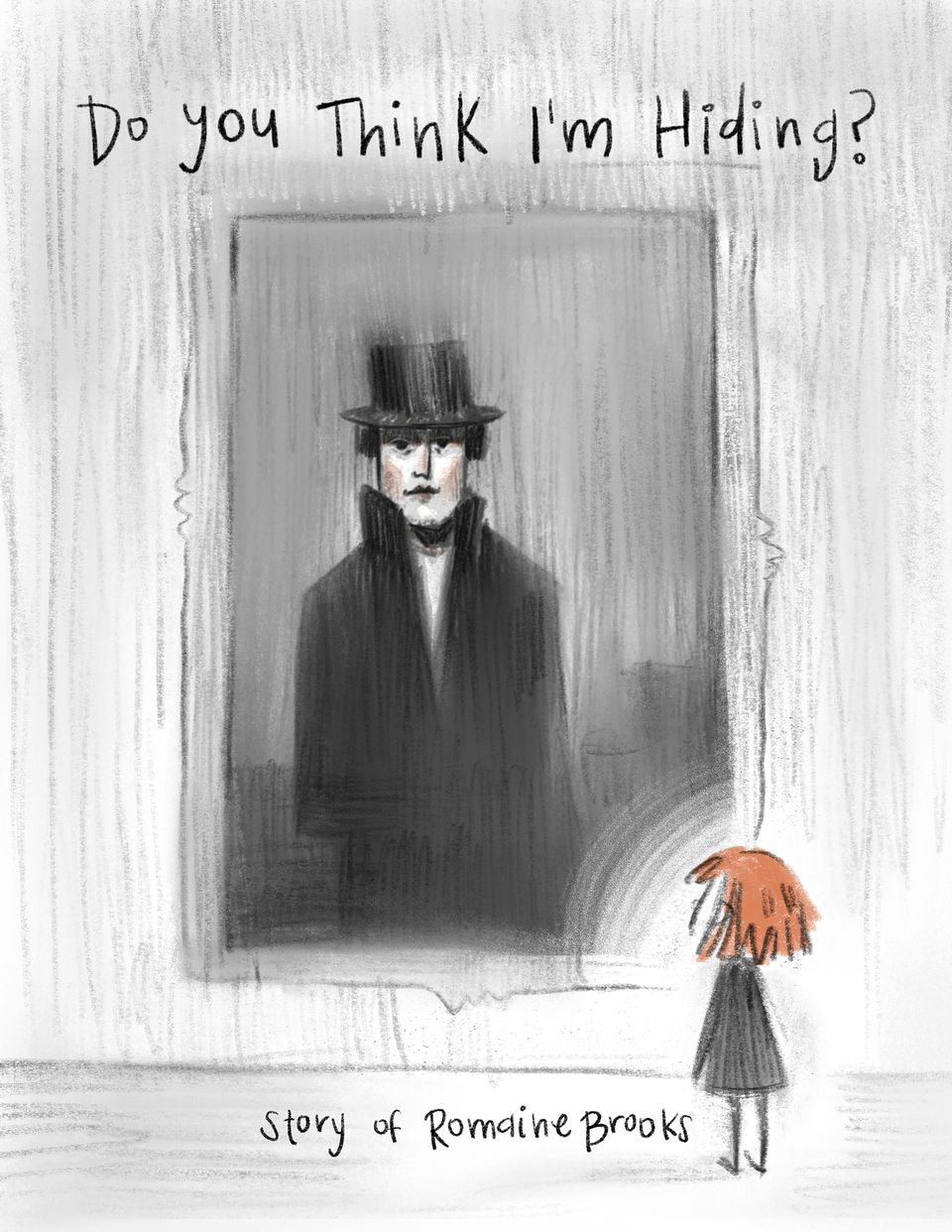
The cover image for this comic is illustrated with rough, choppy pencil markings and strokes in a style of pencil sketches. The cover is predominantly in greyscale. At the center of the page is a framed portrait of an individual wearing a long black coat, a black top hat, and a downcast expression. In the bottom right corner, a young girl with striking short, straight, bright orange hair looks up at the portrait with curiosity. Text reads, “Do you think I’m Hiding?” across the top of the cover, and “Story of Romaine Brooks” is at the bottom of the cover.

Panel 1: The young girl with chin-length, straight, bright orange hair looks up in wonder at the same portrait on the cover of an individual wearing a top hat and long black coat. The girl has pale white skin and a reddish-pink nose and cheeks. She is wearing dark gray. Text reads, “That’s Romaine in the top hat she’s so… grey.” Panel 2: Close up at the portrait of Romaine Brooks from the last panel. She is wearing a black top hat and a black coat with a high collar. On the right side of the panel, a hand holding a paintbrush extends to add a reddish-pink detail to the portrait and to Romaine’s cheek. Text reads, “She Painted her portrait in 1923. Almost 100 years later, she still looks right at us.” Panel 3: Sketch of an elderly Romaine Brooks with grey hair, wearing the same high collared coat featured in the self-portrait. She works at an easel painting. Text reads, “She titled her memoir ‘No Pleasant Memories.’ The grey starts to make sense.” Panel 4: A sketch of two hulking shadows cast against a greyscale wall. One shadow is of a woman pointing with her right hand in an accusatory manner at the second shadow, a figure of a man who appears to be drinking alcohol. The man and woman are arguing. At the bottom of the panel sitting on the floor, is a small girl, young Romaine Brooks, who looks very sad and has her arms wrapped around he legs to form her body into a small ball to hide as her parents’ fight. Text reads, “Her childhood was marked by unhappiness and abuse.” Panel 5: Romaine Brooks, as a young woman, sits at an easel working on a figure painting of a female model. She is in a classroom at art school. Behind her, faint vertical pale blue lines hint at a window. She is surrounded by hulking figures of her male classmates who are pointing at her and chastising her. The figures and the room is gray. Text reads, “In art school she was the only woman student and often faced harassment from the men in class.” Panel 6: Young Romaine stands in an empty room carrying a suitcase and facing an open doorway. Faint pale blue lines representing daylight shining through the doorway and flooding Romaine with light. Text reads, “Upon the death of her mother, she inherited her family’s fortune and rented a small studio. But her childhood would haunt her.” Panel 7: Romaine has cut her hair short and is wearing men’s attire. Romaine stands in front of a full-length mirror, looking at her reflection with short hair and buttoning up a long men’s overcoat. The image is a rough, black and white sketch. Text reads, “She soon cut her hair short and began dressing in men’s attire.” Panel 8: Romaine has trace of a smile on her face as she works on a painting at her easel. Dipping a paintbrush into her pallet, this is the first time in these pages that color is represented in Romaine’s images. She paints with light blue paint on her canvas. Text reads, “She began to experiment with her color palette.”
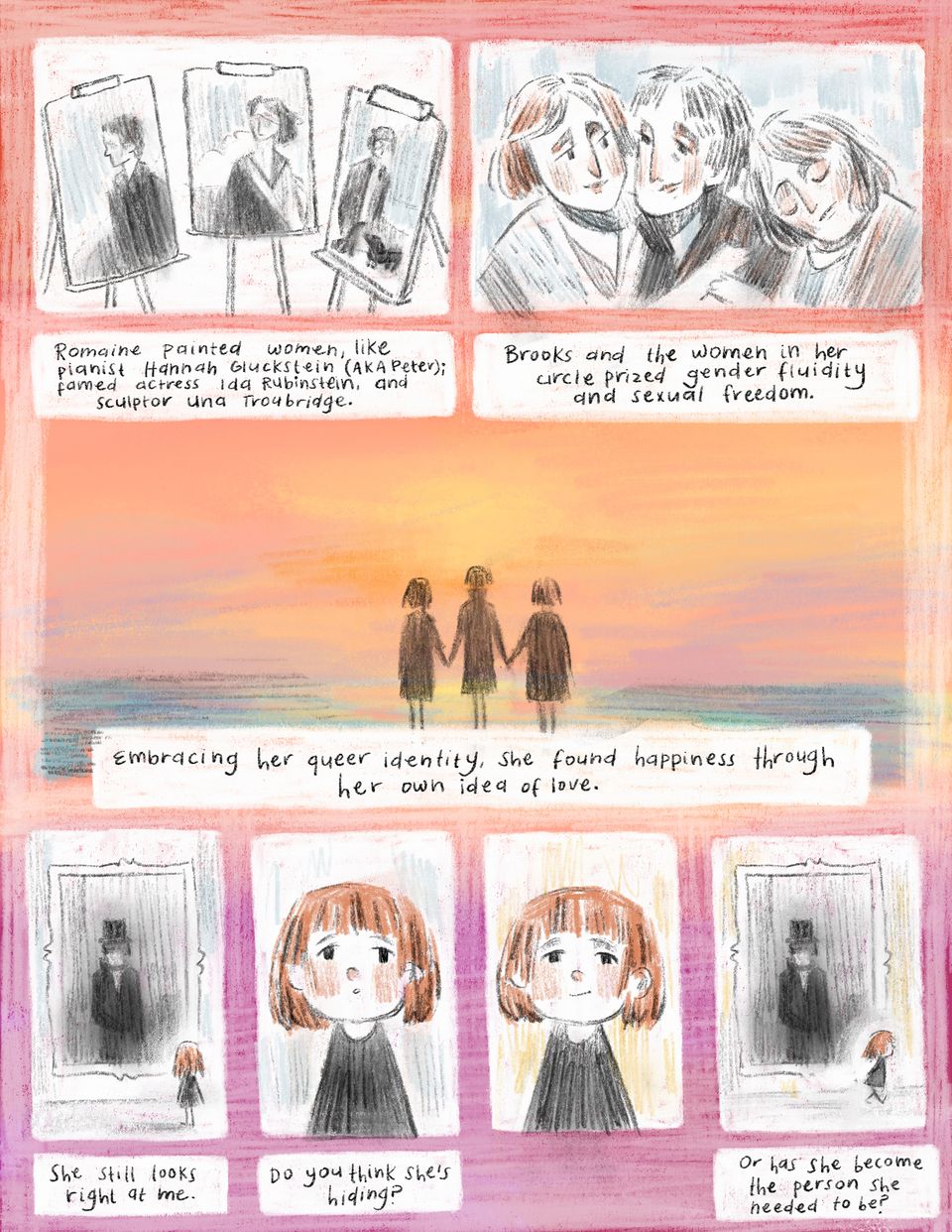
Panel 1: Three easels set up in a group hold paintings by Romaine. These portraits are of her friends and muses. The first easel depicts pianist Hana Gluckstein (AKA Peter), who has short hair and is wearing a dark overcoat. The center easel depicts actress Ida Rubinstein, who is wearing sunglasses and the third easel depicts sculptor Una Troubridge, who is painted with her dogs. All three subjects in all three paintings are set against a light blue background. Text reads, “Romaine painted women like pianist Hanna Gluckstein (AKA Peter); famed actress Ida Rubenstein and sculptor Una Troubridge.” Panel 2: Romaine and two of the women in her close-knit circle of friends hug tenderly and gaze lovingly and knowingly into each other’s eyes. Romaine has a smile on her face. They all have short hair pale white faces with rosy features. Slowly, the sketches are starting to transition from being exclusively grayscale to being set against a pale blue background. Text reads, “Brooks and the women in her circle prized gender fluidity and sexual freedom.” Panel 3: Romaine and her female companions stand holding hands facing the ocean and a marvelous sunset with bright colors of pink, yellow, peach, orange, and purple. Their silhouettes are cast into shadow, and the page is washed with color. Text reads, “Embracing her queer identity, she found happiness through her own idea of love.” Panel 4: Back to the present day, the small girl with bright orange hair looks upward at the large, framed self-portrait of Romaine Brooks. Romaine Brooks’ face is blurred, but she is still wearing her top hat and men’s overcoat. The young girl exclaims, “She still looks right at me.” Panel 5: The small girl with bright orange hair faces out of the page, looking curious with her brow furrowed, and asks, “Do you think she is hiding?” Panel 6: The small girl with bright orange hair’s facial expression changes from one of confusion to a small smile of realization. Her background also changes from a grayscale to a golden yellow color. Panel 7: As the small girl with bright orange hair walks away from the portrait of Romaine Brooks, she smiles and exclaims, “Or has she become the person she needed to be?”
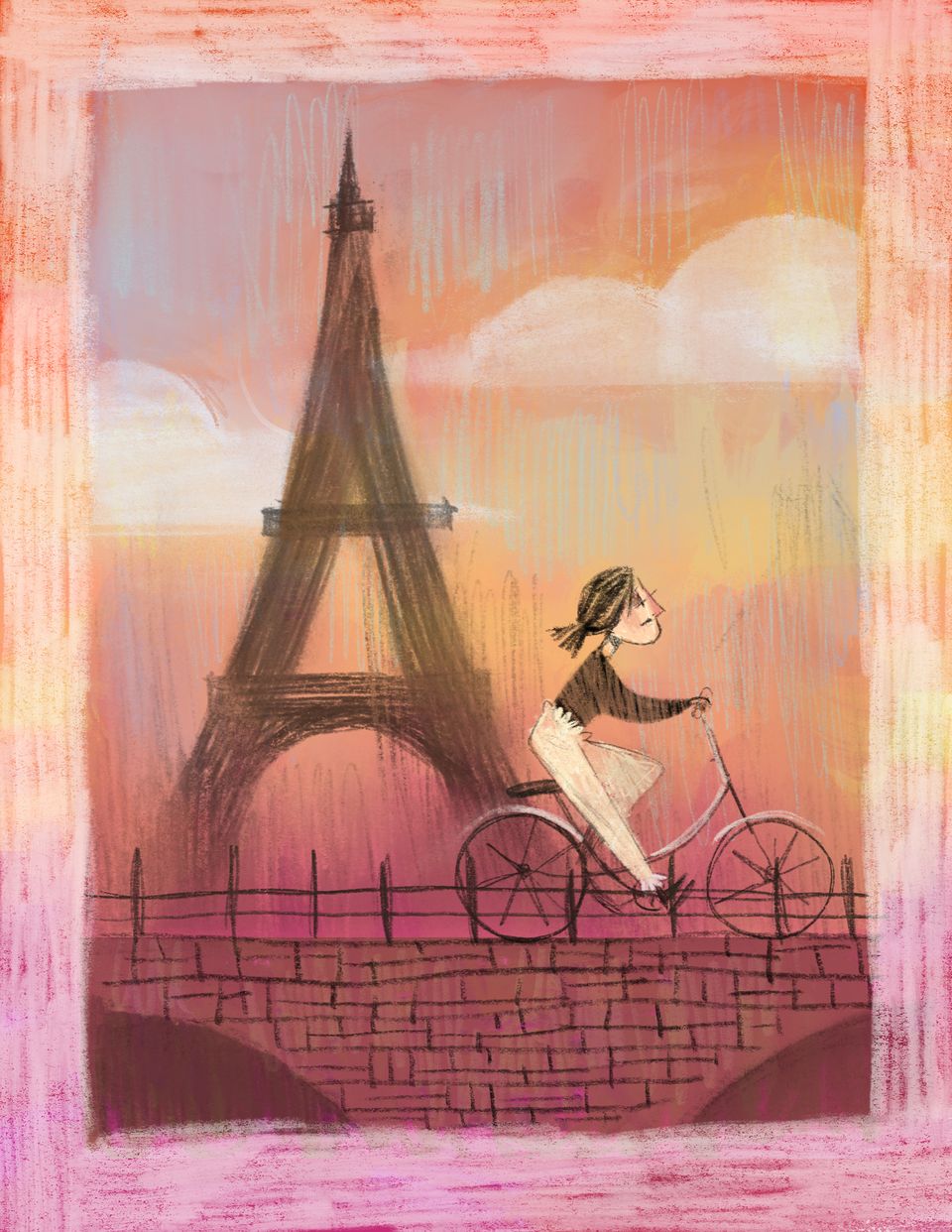
Set against a colorful sunset skyline is the Eiffel Tower, Romaine is shown as a young woman wearing black sweater and baggy white trousers known as bloomers as she bikes across a brick bridge over the river Seine in Paris.

The final page depicts Romaine Brooks’ black top hat with a thin silver band around the brim. Below the top hat reads, “Illustrated by Abigail Rajunov.”














